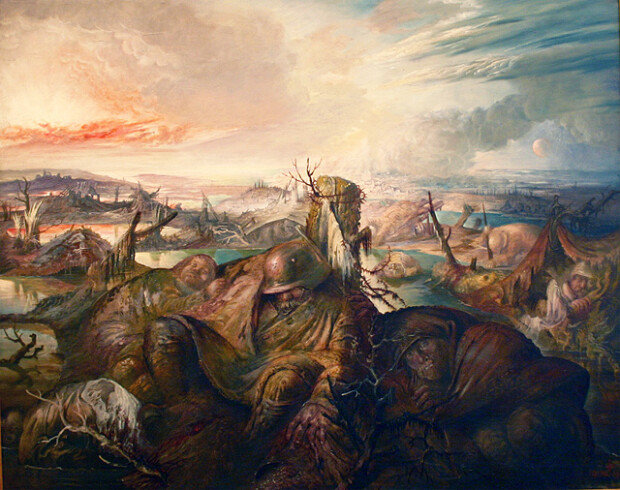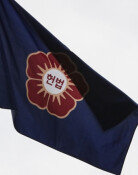Realism of War
Realism of War
Posted June. 25, 2020 08:06,
Updated June. 25, 2020 08:06

Under Nazi’s rule, artworks promoting patriotism or glorifying war were encouraged, but art expressing the misery of war or works of social criticism were oppressed as “degenerate art.” The Nazis incinerated more than 17,000 artworks confiscated from art museums around the country under the justification of “purifying degenerate art.” These included 260 works of Otto Dix, a realist painter of Germany.
This painting describes the tragedy of the First World War, which Dix himself had taken part in. The corpses of soldiers are covered with mud, bombed trenches reduced to puddles. The soldier on the right, perhaps still alive, is staring at the audience shivering from cold and fear. He might have died with his eyes open. The barbed-wire fence around the tree trunk resembles the crown of thorns worn by Christ. This tragic scene depicts the Western Front in the northern part of Belgium. The First World War was an all-out war in which poison gas, thanks, aircraft, machine guns and other weapons of mass destruction were used for the first time. More than 70 million soldiers entered the war, of which around 10 million were killed by the new weapons.
Dix, who was ostracized for his degenerate artwork, was removed from his position as professor at Dresden University. He created this painting while living in retreat in the southwestern region of Germany. It was 20 years after the war. “Fleas, mice, barbed wire, grenades, holes, corpse, blood, gunfire, liquor, cats, poisonous gas, canons, feces, gunfire, mortars, guns, swords. These are war! All belong to the devil!,” wrote Dix in his journal during the war. As Dix described, war is filthy, miserable and satanic. It can never be heroic or romanticized. Dix described the horrific, terrifying and bloody scenes of war to “destroy the appallingly terrifying forgetfulness of humans”, as one critic put it.
Headline News
- Med professors announce intention to leave hospitals starting Thursday
- Bridge honoring Sgt. Moon Jae-sik unveiled in Pennsylvania
- Chief of Staff Chung tells presidential secretaries to stay away from politics
- US FTC bans noncompete agreements
- N. Korea launches cyberattacks on S. Korea's defense companies







